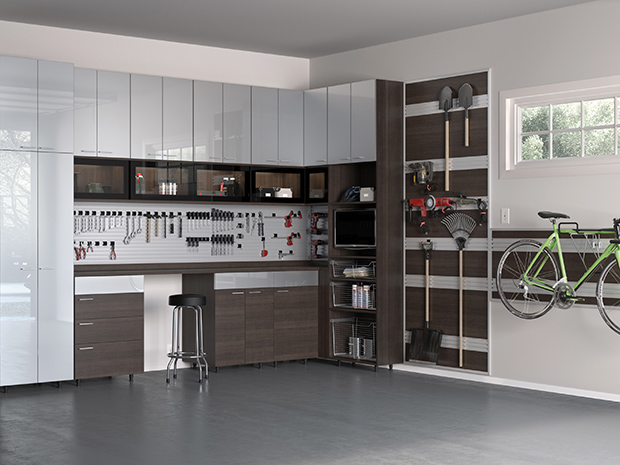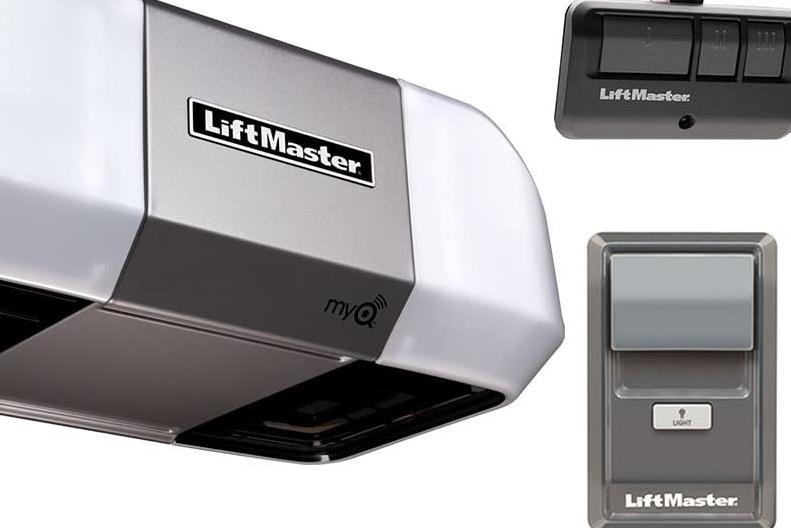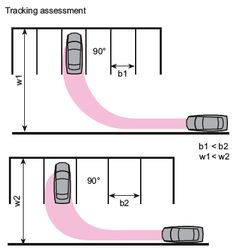
Homelink's garage door opener system can be controlled from inside your car. It can be used in conjunction with many garage door openers. It's easy to program and use. But, it is important that you follow safety precautions in order to do the job correctly.
To start off, your garage door opener needs to be set to the right mode and the Homelink unit needs to be located. The programming process can start once this has been completed. You should be aware that the homelink system is not compatible with all garage door openers, so check out the manufacturer's website for more information.
A Homelink device will usually contain a square or circular "LEARN CODE” buttons. This button is often located near the garage opener's motor. You must press the button two seconds to activate it. Then, release the button quickly.

A Homelink indicator light will be lit up to signal that the device is connected. The indicator will slowly flash when this happens. This is Homelink's way to let you know that it is communicating with your garage door opener. If the light continues to blink, you can expect the programming process to take approximately 10 seconds.
Three buttons are included in the HomeLink unit. The opener is controlled by two of the buttons. However, you will also need to use one of the other two to program the unit. These buttons are usually located on the ceiling or above your car's center console.
You can easily add a HomeLink control on your existing residential garage door opener by using a HomeLink Conversion Kit. The kit includes additional accessories to help you install the remote control. Depending on your opener model, you may need a HomeLink compatibility bridge to facilitate the installation.
Test it after you have programmed your opener. As long as it works, you should be happy with the result. You will need to program it again if the door does not open. While you're programming the opener, make sure you don’t close the door. The motor could burn out.

Before you leave your house, check to see if there are any obstructions in the door's path. This is important because moving the garage door can cause damage or serious injury to your vehicle.
The HomeLink technology is impressive, but it can also be dangerous if it's not used correctly. To prevent this, make sure you take safety precautions. Keep your garage doors locked.
FAQ
What would it cost for a home to be gutted versus what it would cost to build one?
Gutting a home removes everything inside a building, including walls, floors, ceilings, plumbing, electrical wiring, appliances, fixtures, etc. This is usually done when you are moving into a new home and need to make some adjustments before you move in. The cost of gutting a home can be quite expensive due to the complexity involved. Depending on what job you do, the average cost for gutting a house is $10,000 to $20,000
Building a home means that a builder constructs a house piece by piece, then adds windows, doors, cabinets and countertops to it. This is typically done after purchasing lots and lots of lands. Building a home is normally much less expensive than gutting, costing around $15,000-$30,000.
When it comes down to it, it depends on what you want to do with the space. You'll likely need to spend more money if you want to gut a property. It doesn't matter if you want a home built. Instead of waiting for someone to tear it down, you can make it exactly how you want.
What are the largest expenses when remodeling a kitchen
There are several major costs involved in a kitchen remodel. These include demolition, design fees, permits, materials, contractors, etc. Although these costs may seem relatively small, if you take them all together, they can quickly add up. These costs quickly multiply when they are added up.
Demolition is usually the most expensive. This involves removing old cabinets, appliances and countertops as well as flooring. The insulation and drywall must be removed. Finally, replace the items.
Next, you must hire an architect to draw out plans for the space. Next, you must pay for permits to ensure the project meets building codes. The final step is to find someone to carry out the actual construction.
Finally, after the job is completed, you must pay the contractor. You could spend anywhere from $20,000 to $50,000, depending on how large the job is. Before hiring a contractor, it is vital to get estimates from multiple people.
These costs can be avoided if you plan. You may be eligible to get better prices on materials, or you might even be able skip some of your work. You will be able save time and money if you understand what needs to done.
For example, many people try to install their cabinets. They think this will save money because they don't have to pay for professional installation services. It is often more expensive to have professional installation services. A job can typically be done in half the time than it would take for you by professionals.
A cheaper way to save money is buying unfinished materials. It is important to wait until all pieces have been assembled before buying pre-finished materials, such as cabinets. You can immediately use unfinished materials if you purchase them. You can always make a change if things don't go as you planned.
But sometimes, it isn't worth going through all this hassle. Plan is the best way to save on home improvements.
How can I tell if my home needs to be renovated or remodelled?
First, look at how recent your home has been renovated. If you haven't seen any updates for a few years, it may be time to consider a renovation. However, a remodel might be the best option for you if your home seems brand-new.
Your home's condition is also important. You should inspect your home for holes, peeling wallpaper, and broken tiles. It's possible to remodel your home if it looks good.
You should also consider the overall condition of your house. Is the structure sound? Are the rooms clean? Are the floors in good condition? These are essential questions to consider when choosing the type of remodeling you want.
What should I do with my current cabinets?
It depends on whether you're considering selling your home or renting it out. You'll need to remove the cabinets and refinish them if you plan to sell. This gives buyers an impression of brand new cabinets, and it helps them imagine their kitchens after they move in.
If you are looking to rent your house, it is best to leave the cabinets as-is. Tenants often complain about having to clean up dishes and fingerprints from previous tenants.
You might also think about painting your cabinets to make them appear newer. Use a high-quality primer. Low-quality paints may crack over time.
Is it cheaper to remodel a bathroom or kitchen?
Remodeling your bathroom or kitchen is expensive. But considering how much money you spend on energy bills each month, it might make more sense to invest in upgrading your home.
It is possible to save thousands every year with a simple upgrade. A few small changes, such adding insulation to walls or ceilings, can cut down on heating and cooling costs. Even a modest addition can improve comfort and increase resale value.
It is essential to remember that renovations should be done with durable, easy-to-maintain materials. Material like porcelain tile, stainless-steel appliances, and solid wood flooring are more durable and can be repaired less often than vinyl or laminate countertops.
Altering old fixtures can also help reduce utility bills. Low-flow showerheads or faucets can help reduce water usage by up 50 percent. Up to 75 percent of electricity can be saved by replacing inefficient lighting fixtures with compact fluorescent bulbs.
What is the difference between renovation and remodel?
A remodel is a major change to a room or part of a room. A renovation is a minor change to a room or a part of a room. For example, a bathroom remodel is a major project, while adding a sink faucet is a minor project.
A remodel involves replacing an entire room or part of a whole room. Renovating a room is simply changing one aspect of it. A kitchen remodel might include the replacement of countertops, sinks as well as appliances, lighting, and other accessories. A kitchen remodel could also include painting the walls or installing new lighting fixtures.
Statistics
- Following the effects of COVID-19, homeowners spent 48% less on their renovation costs than before the pandemic 1 2 (rocketmortgage.com)
- 57%Low-end average cost: $26,214Additional home value: $18,927Return on investment: (rocketmortgage.com)
- According to a survey of renovations in the top 50 U.S. metro cities by Houzz, people spend $15,000 on average per renovation project. (rocketmortgage.com)
- 5%Roof2 – 4%Standard Bedroom1 – 3% (rocketmortgage.com)
- Attic or basement 10 – 15% (rocketmortgage.com)
External Links
How To
How to Remove Tile Grout From Floor Tiles
Most people don’t know what tile grouting is. It is used to seal joints between tiles. There are many types available today. Each is used for a specific purpose. We will show you how tile grout can be removed from floor tiles.
-
Before you start this process, make sure that you have all the necessary tools. You will need a grout cutter and grout scraper.
-
Now you need to start cleaning off any dirt or debris stuck under the tile. Use the grout knife to remove the grout. Scrape away any remaining grout. Be careful not to damage any of the tiles.
-
After you've cleaned up everything, grab the grout scraper to remove any grout. If there isn't any grout left, you can go to step 4.
-
After all the cleaning is done, it's time to move on. You can now take one of the rags, and soak it in some water. The rag should be completely dampened. When the rag has become soaked, wring it out, so that excess water stays inside the rag.
-
Place the wet paper towel at the joint of the tile and wall. Press firmly on the rag until the grout begins to break apart. Slowly pull down on the rag until it is pulled towards you. Continue pulling it backwards and forwards until all the grout has been removed.
-
Continue to repeat steps 4 and 5, until all grout has been removed. Rinse and repeat the procedure if necessary.
-
After you have removed all grout, rub the tiles with a damp towel. Allow to dry completely.